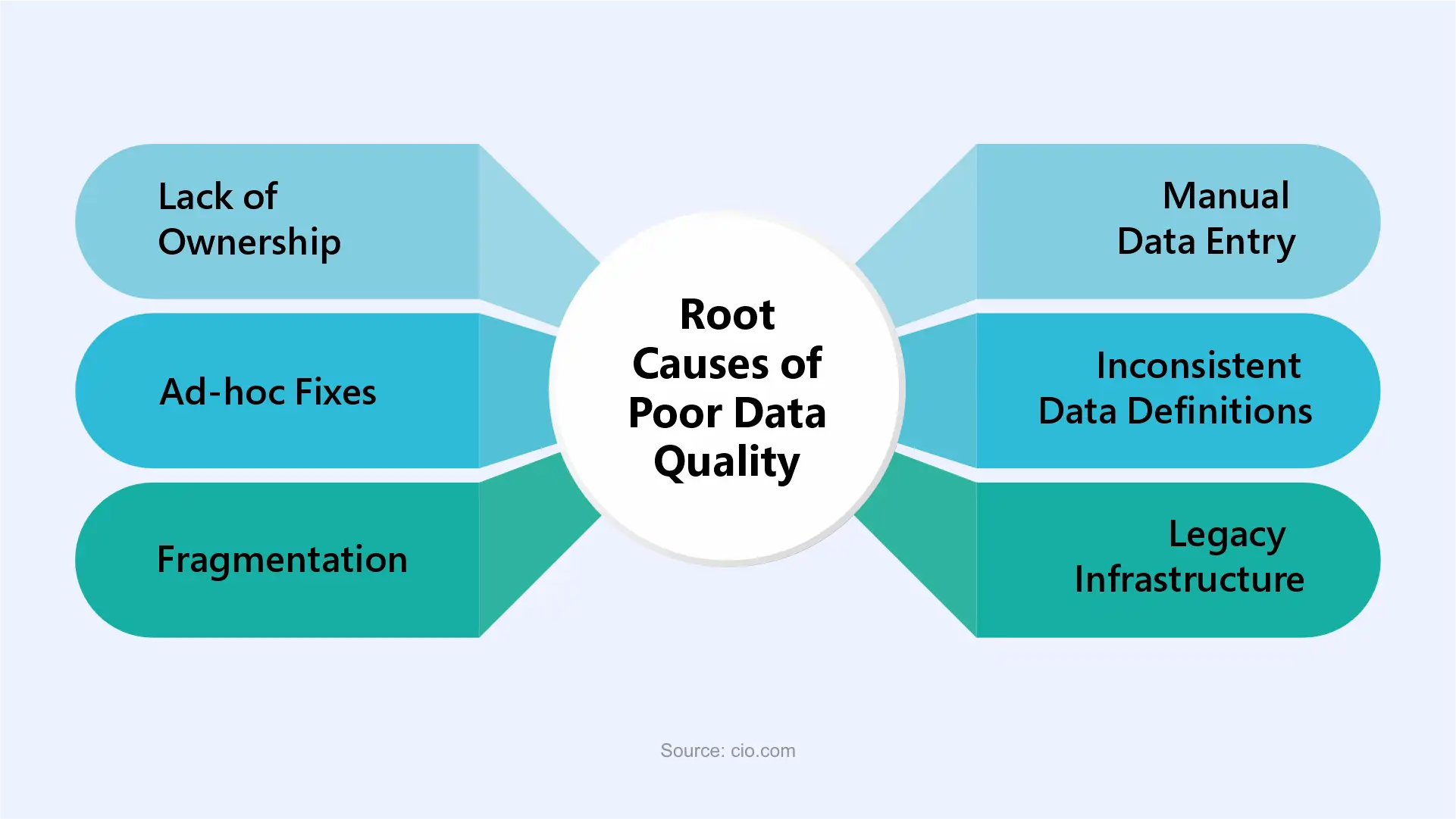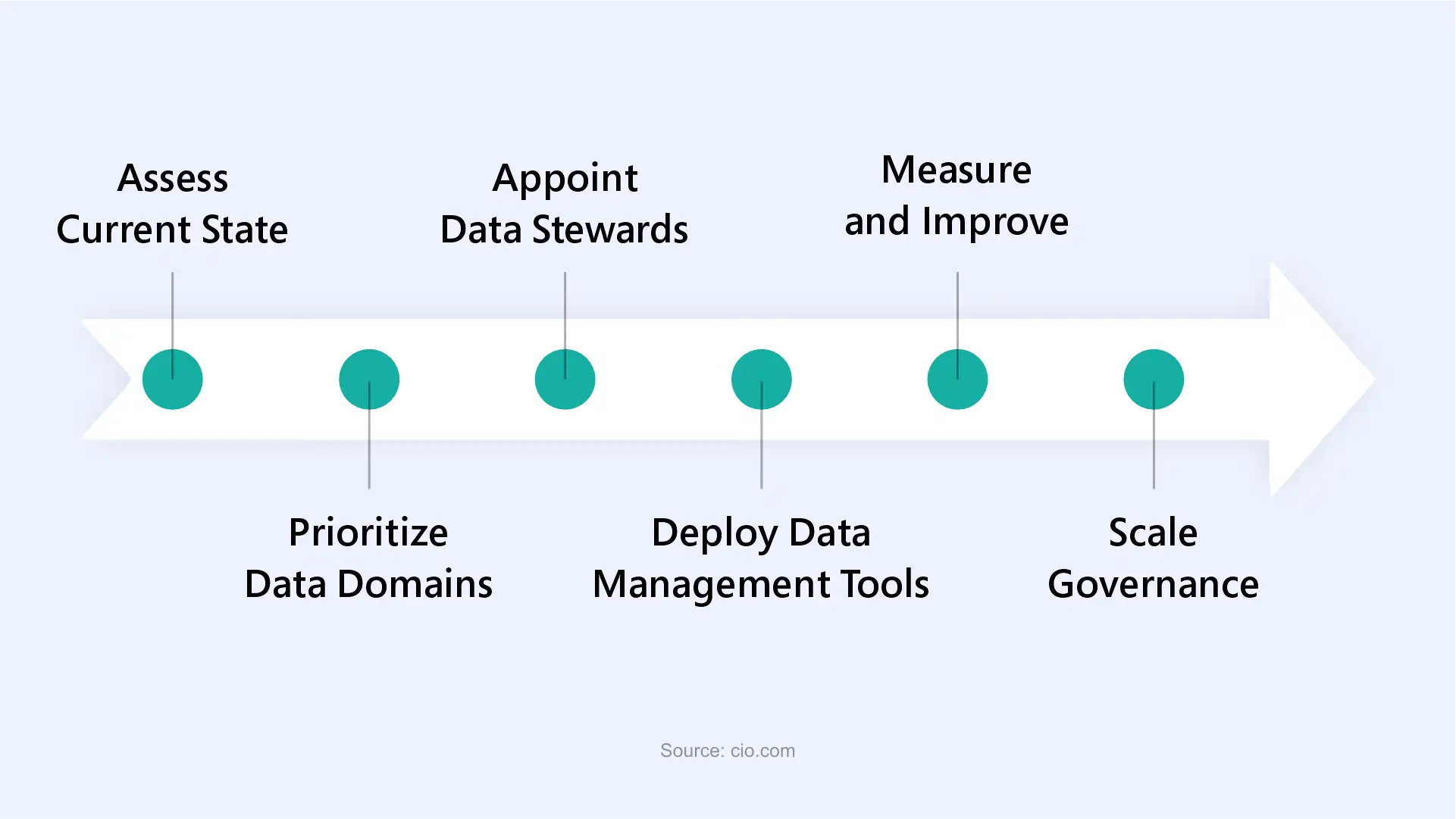

Data trust is a critical factor when leveraging data in daily operations. Without it, organizations face inefficiencies, poor decision-making, and the risk of compliance failures; henceforth limiting their ability to achieve business objectives. Poor data quality grapples the overall performance of an organization. Data trust is directly proportional to data quality; hence the two factors in as a major reason for retarded organizational growth. With generative AI taking sturdy strides ahead; it is critical for business organizations to pivot strong data quality assessments to steer long term growth. Let us read for the hidden deal-breaker and rock-solid future plans.
The Declining Graph of Data Trust

1. Fragmentation- Siloed systems trigger data that yields little to no integration or consistency. Teams struggle to reconciled information scattered across dozens of disconnected sources, each with its definitions and logic.
2. Inconsistent business definitions- Inconsistencies such as discrepancies in understanding one as a customer or a lead or an inactive account; may lead to fuelling reporting errors, undermining analytics and stalling enterprise-wide alignment.
3. Legacy infrastructure- Outdated systems cannot enforce modern validation rules, automate cleansing or scale quality controls.
4. Manual data entries- This may involve data quality being dependent on human vigilance without safeguards; that could lead to multiplied errors.
5. Ad hoc Fixes- Reactive temporary make-dos can impact adversely; as against being securely designed into workflows from the beginning.
6. Lack of ownership- Without defined accountability may cause rifts, that may lead to issues and cripple progress.
The above listed reasons are the factors that impact the quality of data in an enormous way; that may lead to the following data quality issues organization-wide.
Common Data Quality Issues
Business Risks Associated to Poor Data Quality
1. Missed Opportunities
With poor lead data, you can miss out on an opportunity to identify potential prospects; or a poor product information can strain your ability to effectively strategize product development as per market needs.
2. Lost revenue- Then comes the financial brunt that your organization might face; on losing key information of poorly constructed product information or consumer interest data. This as well lead to missed alignment of your revenue targets or even annual sales targets.
3. Dip in operational efficiency and productivity- Absence of data quality software; and relying heavily on manual data quality checks leaves more space for data errors as businesses need end-to-end system that utilizes technology to automate data quality validation and implement data quality processes in time.
4. Customer dissatisfaction- There is no second guessing the fact that all of this shall lead to customers drifting away from your business as they feel unheard, misunderstood, or even rejected.
5. Ill analysis- A mismatch in the data analysis shall to hefty concerns regarding identifying key patterns for the future and scarcity of good clean data for business intelligence.
6. Reputational damage- Poor product information is one of the biggest reasons that customers return bought products. Isn’t that an insult? This drastically hits bad at the brand reputation for the longest term possible.
7. Compliance failure- It is of utmost importance to stand firm by and adhere to the data governance standards such as GDPR, HIPAA, and CCPA, etc; to revisit and revise their data management strategies.
8. Increased financial costs- It is deemed appropriate rather best to invest in a complete single data quality management system that cleans and prepares all types of data handled at your organization; that shall eventually curtail financial losses over time.
Roadmap for CIOs and CDOs

The Trickle-Down Economics of Poor Data Quality
The data science industry never ceases to startle! By now, it is a clear fact that needs no explanation as to how critical data quality is for a smooth functioning organization. Poor data does not sit at the top as it percolates and reaches the bottom of the ecosystem; and cripples the overall progression of an organization. We just read about the reasons that factor in for these challenges and what consequences can a business face due to data errors. This is why, the top tier stakeholders and team are levied with the shared responsibilities of deploying accurate data for high-precision data-driven decision-making. Understanding the nuances and getting in sync with them is the key to a wholesome organizational run. Get your teams amped up with the requisite data science certifications if you think that can be a boost in overall efficiency, what’s stopping you? Scale up error-proof now!
This website uses cookies to enhance website functionalities and improve your online experience. By clicking Accept or continue browsing this website, you agree to our use of cookies as outlined in our privacy policy.